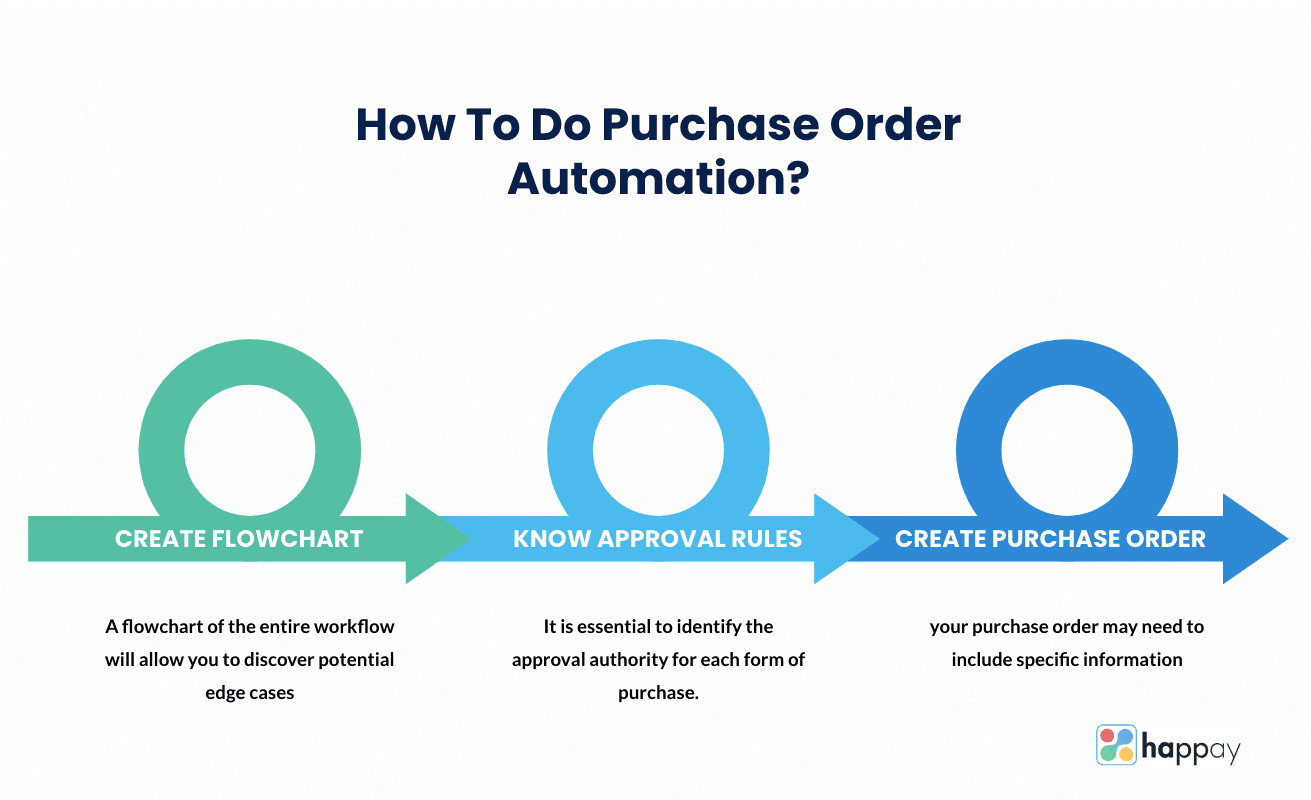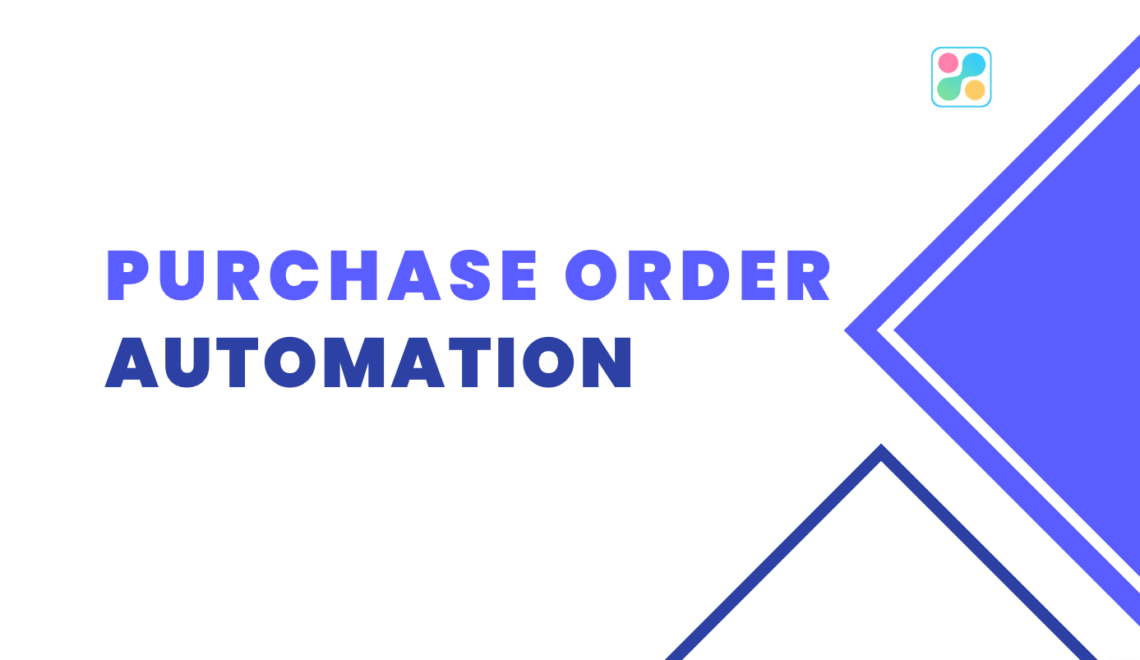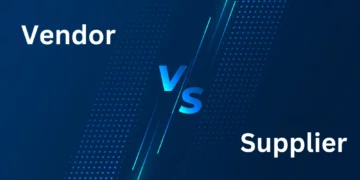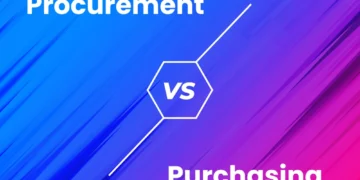Last Updated on November 28, 2025
Purchase Order
A purchase order is a tedious and time-consuming process in most businesses. Many people find it frustrating as it can cripple businesses. Businesses’ most common mistake is to bury purchase orders beneath other tasks. So if you want to deliver everything with perfection, the process of purchasing orders will take time.
Suppose you want to be more fluent and error-free in the purchase order process. Many tools and software are available that help to automate and enforce a successful purchase order approval. With the right tools, you can make your business boom and achieve big annual turnovers.
Purchase orders, or purchase orders as they are known in business terminology, are legal documents issued and signed by a buyer. They indicate that the buyer is committing to pay the vendor for a specific item or service that will be delivered to them in the future.
The advantage of issuing purchase orders is that buyers can order specific items without making immediate payments. Similarly, if you are an individual seller, POs simplify the process of extending credit to buyers without putting them at risk.
It is important to note that every PO has its distinctive number that can help both the buyer and seller track the delivery and payment process.
In addition, there are blanket purchase orders, which refer to one of the most common purchase orders. The buyer and seller are involved in an ongoing relationship until a certain threshold has been reached. Faster and more efficient, purchase order automation can streamline your purchasing processes.
Read also – How Does Invoice Automation Work?
What is the Purchase Order Process?
An enterprise’s purchase order (PO) is a means of understanding and keeping track of all the goods and services they have ordered and received.
With POs, managers can keep track of important information, such as quantity, delivery instructions, pricing, terms, and deadlines, along with other pertinent data.
The process of purchasing orders consists of several steps. While your organization’s PO process may be unique in specific ways, seven elements of the process apply to most purchase orders.

1. Processing of Orders
The purchasing process begins with the purchase request, which is the first step. However, there is a point when you must understand what is required and what is being purchased.
Moreover, being aware of the request’s necessity, the amount of money you can spend, and the time frame when you need the product and the service provider ensures that you understand each.
2. Confirmation
The next phase is approved once you have generated what you need in order. A verbal confirmation or an email has been sent, as seen in multiple instances. At the same time, some companies prefer to process paperwork and approve your request formally.
3. Dispatch
Once your request has been approved, your purchase order will be sent to the specified suppliers. This is the time when vendors and suppliers place their bids. The selection of such bids is based on the level of service, the quality of the desired goods, the competitive pricing, and a few other relevant factors to your organization.
4. Binding Agreement
Once the company and the vendor have received a suitable bid, both parties must approve a contract. These legal contracts detail the terms and conditions of the purchase, dispute resolution, and benefits associated with the purchase.
5. Delivery
According to the timetable and shipping specifications, your purchased items will be delivered to you. The moment you receive your order, you can instantly verify the quality. You can let the supplier know if there is anything about the order that does not meet your standards. In this order, the supplier sends billing information to the buyer, informing him of the amount to be paid and how it should be made.
6. A Three-Way Match
The next step is to match the product, ensuring no additional charges are applied to the PO. This is called a three-way match. Using a three-way match, you can also determine whether you should pay half of the invoice amount.
7. Completion
After approving a three-way match, the process of a purchase order can be completed.
Read also – Business Automation for Finance

Image Credit: freepik.com
What is Purchase Order Automation?
Automation of purchase orders involves using software to expedite the approval process for purchases.
The preparation of manual purchase orders is often time-consuming and prone to errors. In addition to causing delays in orders, manual POs can result in miscommunication between seller and buyer and additional expenses.
The PO automation process can help you overcome these challenges easily. A system available provides a template ready to be sent to the appropriate team members for approval rather than using manual methods.
Why is the Purchase Order Important?
The purchase order is not only an important document, but it is also a compassionate document. If your product is delayed and you need to track your order, a purchase order is ideal. This document contains all the details you and your supplier have agreed upon. These include the order volume, type, and payment terms.
The purchase order has information, including the number of items purchased, which helps determine the price and profit you want to set.
Managers can analyze work hours, wages, and even costs like lighting, office supplies, and furniture by using the purchase order and purchasing software.
This assists in calculating the total cost of production for any given product. Such information provides solutions to various performance-related concerns, such as increasing effectiveness and setting budgets for the upcoming fiscal year. Additionally, it’s easier to find a record of all actions taken thanks to the audit trail, so there’s no time lost tracking down missing orders and documents.
Read also – 5 Steps to Automate Your Expense Approval Process

Image Credit: unsplash.com
Purpose of Purchase Order Automation
Manually processing Purchase Requisitions and Orders results in duplicated steps, missed steps, and wasted time. With an automation solution, you can eliminate manual data entry and put checks and balances in place to prevent mistakes.
If you are a small business, you probably don’t fill out purchase orders regularly. So minor delays would be unnoticed. But if you own a big organization, manual POs would cause massive losses due to human errors and delays.
This is where purchase order process automation comes in handy. It is efficient, proven error-free, and takes less time than manual purchase orders. In addition, PO automation services allow you to pre-approve the budget and put credible sellers on the safelist.
Risks and Challenges of Manual Processing in the Purchase Order
Keeping the manual purchase order processing up-to-date is not only costly but also inefficient and tiresome to do. A disproportionate amount of paper must be maintained to process one single purchase.
In addition, while storing documents for approval, it is essential to ensure they are not lost and to keep them organized to prevent them from getting lost. The result is that the human purchase order process has become chaotic and time-consuming.
The following are the highlighted risks and challenges of the manual processing of purchase orders.
- Lacks transparency
- Drives up costs
- Innumerable documents
- It needs to be fixed by human
- Prone to mistakes
- Slow process
Read also – 7 Reasons to do Expense Automation
Digital Purchase Orders
An electronic document known as a digital purchase order (DPO) specifies the terms and conditions of the transaction between the buyer and supplier. It is usually produced through a purchase order or an electronic order system.
A digital buy order contains all the information required to complete the transaction, just like a paper purchase order does. As a result, all the paperwork related to a transaction is kept in one place.
Using digital software helps you to overcome the fear of manually processing the purchase order. It aids businesses by removing errors, saving time, and ensuring your purchases are accurate.
How to Do Purchase Order Automation?
The benefits of purchasing order software include faster invoice processing, better supplier relationships, and cost savings.
Here are the easy steps to pull off a purchase order successfully.

1. Create a Flowchart to Describe your Buying Process
It is common for businesses to have several partners with various purchasing requirements gathered under one roof. A map of the entire workflow will allow you to discover potential edge cases and alter your purchasing policy to ensure that your business is ready for automation by ensuring that the entire process is mapped.
2. Make Sure Your Team Knows the Approval Rules
It is essential to identify the approval authority for each form of purchase. In general, unnecessary approval processes lengthen the processing time. As part of a high-resistance strategy, you should also have the right tools to manage your expenditures.
3. Create Your Purchase Order
If you wish to comply with laws and industry standards, your purchase order may need to include specific information.
Various types of purchase order management systems are used by different enterprises. It is common for small to medium-sized businesses to use Microsoft Excel, spreadsheets, and ledgers, while larger companies may use purchase order software like QuickBooks, Coupa Procurement, Xero, Procurify, and others. To manage their procurement lifecycle, companies use different purchase order software.
Read also – Purchase Order vs Invoice
Purchase Order Automation Workflow
Organizations need to follow a few predetermined procedures when it comes to approving purchase orders. Unfortunately, even though purchase order workflow varies from business to business, they often look like this.
- When buyers identify a purchasing requirement, they search for a vendor who can meet that need.
- The buyer evaluates the potential purchase.
- The buyer generates purchase orders, which are then approved internally by the buyer.
- A purchase order is submitted by the buyer.
- Upon receiving the purchase order from the buyer, the seller approves it or asks for revisions.
- The buyer confirms the order.
- The seller provides an invoice as soon as the products are received.
Key Features of Purchase Order Automation
Purchase order automation has proven its worth. The following are the features of purchase order automation.
- It helps you by making sure your order is placed correctly.
- Aids in planning and managing projects and purchases.
- It saves your employees’ time.
- Provide you with the opportunity to conduct business with government and local authorities.
- Enhance the efficiency of your stock management.
- Find the best suppliers for your business.
Benefits of Purchase Order Automation
Executives in the supply chain benefit most from purchase order automation. This is because it eliminates repetitive manual tasks, such as the creation of purchase orders, allowing them to focus on more critical tasks. Purchase order automation software offers the following benefits to a busy supply chain executive:
1. Enhances Efficiency
The most significant benefit of using PO automation is that it enhances efficiency because efficiency in today’s business world is key to success. An automated procurement process allows you to decrease your processing times and increase process efficiency.
2. Managing Documents
Automation is beneficial to avoid the hassle of compiling files or creating a filing system. All information and documents are digitized. This will enable you to do any action with a few clicks.
3. Lowers Error Rate
Errors can occur when purchase orders are manually generated. You can lose hours of work due to these errors. Automation of purchase orders provides an advantage by eliminating errors. It provides a fast and error-free method of creating a purchase order.
4. Enhanced Delivery Time
Purchase order automation is a very effective way to grow your business or compete with competitors. Using automated purchase order software can save you time and speed up repetitive tasks.
5. Better Inventory Management
There were times when the store’s inventory was fully stocked. This not only used up the space but made it difficult to manage. However, with the help of purchase order automation, you get the information you need, so you order according to demand.
6. More Visibility
You can keep your data centralized and your systems integrated with PO automation, which will enable you to generate real-time reports and ensure complete transparency in your business.
Read also – 7 Top Expense Management Challenges
Challenges in the Purchase Order Automation
Automated systems are a hot topic these days. Many organizations are implementing intelligent automation to improve efficiency and reduce costs. Despite this, it can be challenging to do so. For intelligent automation to succeed, there are several challenges to overcome. Some of these challenges are listed below.
1. Automation Scope
Determining the scope of automation is one of the first difficulties. A careful assessment of which processes will benefit from automation and which should remain manual is essential.
The temptation to automate everything can be overwhelming. You’ll eventually conclude that some things are just not worth automating. In addition, you will find that many business processes require improvement before they can be automated.
2. Managing Transformation
If automation is implemented incorrectly, it may cause disruption. Workers may be resistant to change or concerned about losing their jobs, managing the transformation process carefully, and ensuring that all employees are on board.
The most common reason for resistance to automation is a lack of expertise in the field. However, encouraging questions and automation education can achieve a seamless transition to change.
3. Quality of Automation
It is also essential to ensure quality. With technological innovation, there is always a danger that something will go wrong. This is why robust testing and quality assurance methods should be in place.
Every new automated process should undergo extensive testing in a test environment before being implemented in a live environment. A skilled team will develop tests throughout the process of developing automated solutions to identify and prevent potential problems.
Read also – Travel and Expense Automation
Conclusion
The advancement of technology has made running a business easier. Automation has been pretty effective. It’s cost-effective, time-saving, and error-free. You can communicate and build a good relationship with the buyer and seller.
Furthermore, an automated purchase order system allows you to customize POs based on your specific requirements and create purchase orders more quickly. However, automation faces a few challenges. A well-managed purchase order can help your business grow.
Purchase Order Automation – FAQs
1. How do you automate purchase orders?
These are easy steps to pull off a purchase order successfully.
- Create a flowchart to describe your buying process.
- Make sure your team knows the approval rules.
- Create your purchase order
2. What is automation in PO?
Automation of purchase orders involves using software to expedite the purchase order approval process.
The PO automation process can help you overcome these challenges easily. A system available provides a template ready to be sent to the appropriate team members for approval rather than using manual methods.
3. What is an ERP system for purchase orders?
You may build a robust supplier database with an ERP system, which is crucial for all firms that purchase diverse parts from several vendors. Your ERP collects and arranges all the necessary supplier data, including names and addresses, components and materials offered, and tax identification information.
4. What are the benefits of a purchase order automation system?
Purchase order automation software offers the following benefits to a busy supply chain executive:
- Enhances efficiency
- Managing documents
- Lowers error rate
- Enhanced delivery time
- Better Inventory management
5. Does purchase order automation save me money?
Automation tools for purchase orders can save time because they require fewer workers. If fewer people are working to create PO, you can save a lot of money. Along with saving money, automation also saves hundreds of hours, and it is also error-free.










Discussion about this post